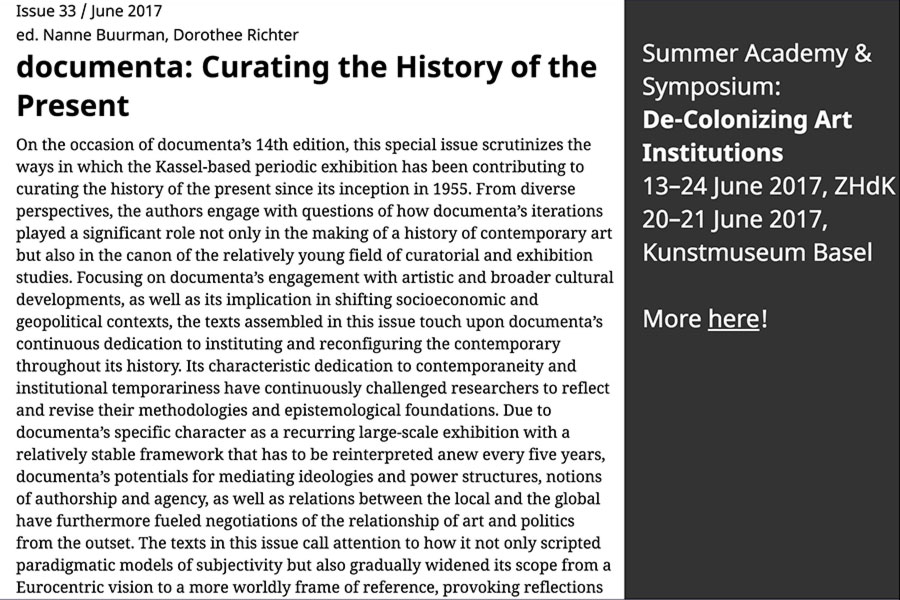De-Colonizing Art Institutions
OnCurating Project Space
Ausstellungsstrasse 16, 8005 Zurich
9–24 June 2017
Contributions by: Maria Thereza Alves, Song-Ming Ang, Priscila Arantes, Stefan Baltensperger + David Siepert, Fabiana de Barros, Mabe Bethônico, Flavio Cury, Jimmie Durham, Gabriel Flückiger and Vera Leisibach, Hikaru Fujii, Szuper Gallery, Patrick Hamilton, Ana Hupe, Balz Isler, Daniel Jablonski, San Keller, Astrid S. Klein, Michael Leung, Marinka Limat, Nkule Mabaso, Filippo Minelli, Lisl Ponger, Raghavendra Rao K.V., Roee Rosen, Sally Schonfeldt, Katrin Stroebel and Simo Laouli, Túlio Tavares, Navid Tschopp, Lucie Tuma, Maíra Vaz Valente, Katie West, Claire Wintle, Casa da Xiclet, Zou Zhao
MAS in Curating poster presentations by
Emilie Bruner, Ludovica Parenti, Matthias Gasser and Silvia Savoldi.
It will coincide with a summer academy hosted at Zurich University of the Arts (ZHdK), and a symposium at Kunstmuseum Basel
The globally active art world nowadays cultivates an exchange that transcends the boundaries between cultures and continents through so-called global museums or globally operating art biennials and festivals, at least for a certain audience able to travel around the globe. Yet, this should not blind us to the fact that in the end a certain perspective of the Western history of art and culture claims primacy over global contemporary art and especially its market. Museums and art institutions all over the world therefore tend to have a uniform appearance. In format and content alike, they cater to and follow “Western” examples.
The question thus arises of how art institutions and museums could work differently by not taking a supposed, globally prevalent “guiding” culture as their orientation but instead continuing to search for new formats. How can an art institution be conceived? What might a de-colonized institution challenge?
Art institutions, fairs and museums in “Western” countries are likewise being called upon to reconsider their ways of addressing their public, and not solely because in the face of the diverse migration movements, cultural processes are in a constant state of change, as G. Spivak pointedly observed. Culture as such is something that exists in a constant movement, in the merging different formats, contents, messages and heritages.
Gayatri Chakravorty Spivak: “What people call transculture is culture as it happens. Culture alive is its own counter-example. Transculturation is not something special and different. It is a moment in a taxonomy of the normality of what is called culture. To assign oneself the special task of cultural translation or plotting cultural translation has therefore to be put within a political context.”

